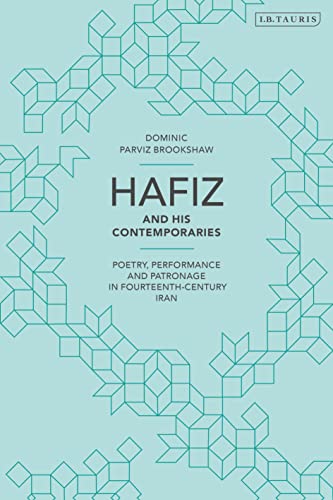1 0 0 0 独居被爆者の心身の健康とQOL
- 著者
- 菅崎 弘之 中根 允文 宇都宮 浩 今村 芳博 石崎 裕香
- 雑誌
- 総合病院精神医学 = Japanese journal of general hospital psychiatry (ISSN:09155872)
- 巻号頁・発行日
- vol.12, no.1, pp.21-29, 2000-05-01
- 参考文献数
- 17
- 被引用文献数
- 2
1 0 0 0 認知症と明るく生きる : <対談>私が伝えたいこと
- 著者
- 太田 正博 菅崎 弘之
- 雑誌
- 病院・地域精神医学 = The Japanese journal of hospital and community psychiatry (ISSN:09104798)
- 巻号頁・発行日
- vol.52, no.1, pp.74-75, 2009-09-18
- 参考文献数
- 5
1 0 0 0 在宅痴呆老人の介護者の精神的健康に関する研究
1 0 0 0 トラック輸送産業の現状と課題 : 労働力不足問題を中心に
1 0 0 0 物流事業における公正取引について……下請法改正によせて
- 著者
- 野尻 俊明
- 出版者
- 日本倉庫協会
- 雑誌
- 倉庫 (ISSN:02875926)
- 巻号頁・発行日
- vol.2003, no.2, pp.4-8, 2003
1 0 0 0 OA 憲法における構成要件の理論
- 著者
- 工藤 達朗
- 出版者
- 法学新報編集委員会
- 雑誌
- 法学新報 (ISSN:00096296)
- 巻号頁・発行日
- vol.121, no.11・12, pp.671-686, 2015-03-16
本稿は、刑法理論における「構成要件」の観念を憲法の基本権解釈に取り入れるべきことを提唱するものである。刑法理論において、犯罪成立の有無は、構成要件該当性・違法性・責任の三要素を段階的に検討することによって判断される。これに対して憲法においては、基本権侵害の有無を判断する方法論が長い間確立していなかった。その原因の一つが、「構成要件」の観念が存在しないことである。この点は、違憲審査基準論においても同様であった。本稿は、基本権解釈に「構成要件」の観念(=「基本権構成要件」)を取り入れることで、違憲審査の判断過程が透明かつ明確になると主張する。そして、この観念を基本権論に取り入れると、ある国家行為が複数の基本権構成要件に該当する「基本権競合」の問題が生じる。この点についても、刑法の罪数論における法条競合や観念的競合の議論が参考になることを明らかにし、憲法と刑法の理論的共通性を指摘する。
- 著者
- John Limbert
- 出版者
- University of Washington Press
- 巻号頁・発行日
- 2004
- 著者
- نوشتۀ حسین زرینکوب
- 出版者
- Intishārāt-i Sukhan
- 巻号頁・発行日
- 1996
1 0 0 0 بحث در آثار و افکار و احوال حافظ
- 著者
- Dominic Parviz Brookshaw
- 出版者
- I.B. Tauris
- 巻号頁・発行日
- 2019
1 0 0 0 OA アトピー性皮膚炎を基礎に発症した感染性心内膜炎の2例
- 著者
- 深川 一史 相川 竜一 羽場 一直 北川 良子 樋口 国博 泉 道博 森 秀樹 奥村 浩二 石田 聡 足立 幸彦
- 出版者
- 一般社団法人 日本内科学会
- 雑誌
- 日本内科学会雑誌 (ISSN:00215384)
- 巻号頁・発行日
- vol.101, no.6, pp.1680-1683, 2012 (Released:2013-06-10)
- 参考文献数
- 5
急性感染性心内膜炎は黄色ブドウ球菌や表皮ブドウ球菌などの強毒性菌によって引き起こされ,高齢者に多いことが知られている.2症例は,20歳と36歳といずれも重度のアトピー性皮膚炎を有する若年患者で,発熱,炎症反応上昇を伴った.経胸壁心エコーにて疣腫と僧帽弁付近の乱流を認め,血液培養検査にてmethicillin-sensitive Staphylococcus aureus(MSSA)が検出され,感染性心内膜炎と診断した.特に症例2では,血液培養と皮膚培養の結果より,感染経路としては皮膚と考えられた.
- 著者
- Yasuo Okumura Koichi Nagashima Masaru Arai Ryuta Watanabe Katsuaki Yokoyama Naoya Matsumoto Takayuki Otsuka Shinya Suzuki Akio Hirata Masato Murakami Mitsuru Takami Masaomi Kimura Hidehira Fukaya Shiro Nakahara Takeshi Kato Wataru Shimizu Yu-ki Iwasaki Hiroshi Hayashi Tomoo Harada Ikutaro Nakajima Ken Okumura Junjiroh Koyama Michifumi Tokuda Teiichi Yamane Yukihiko Momiyama Kojiro Tanimoto Kyoko Soejima Noriko Nonoguchi Koichiro Ejima Nobuhisa Hagiwara Masahide Harada Kazumasa Sonoda Masaru Inoue Koji Kumagai Hidemori Hayashi Kazuhiro Satomi Yoshinao Yazaki Yuji Watari on behalf of the AF Ablation Frontier Registry
- 出版者
- The Japanese Circulation Society
- 雑誌
- Circulation Journal (ISSN:13469843)
- 巻号頁・発行日
- vol.83, no.12, pp.2418-2427, 2019-11-25 (Released:2019-11-25)
- 参考文献数
- 27
- 被引用文献数
- 17
Background:The safety of discontinuing oral anticoagulant (OAC) after ablation for atrial fibrillation (AF) in Japanese patients has not been clarified.Methods and Results:A study based on the Atrial Fibrillation registry to Follow the long-teRm Outcomes and use of aNTIcoagulants aftER Ablation (AF Frontier Ablation Registry) was conducted. Data were collected from 3,451 consecutive patients (74.1% men; age, 63.3±10.3 years) who had undergone AF ablation at any of 24 cardiovascular centers in Japan between August 2011 and July 2017. During a 20.7-month follow-up period, OAC therapy was discontinued in 1,836 (53.2%) patients; 51 patients (1.5%) suffered a stroke/transient ischemic attack (TIA), 71 (2.1%) suffered major bleeding, and 36 (1.0%) died. Patients in whom OAC therapy was discontinued were significantly younger than those in whom OACs were continued, and their CHA2DS2-VASc scores were significantly lower. The incidences of stroke/TIA, major bleeding, and death were significantly lower among these patients. Upon multivariate adjustment, stroke events were independently associated with relatively high baseline CHA2DS2-VASc scores but not with OAC status.Conclusions:Although the incidences of stroke/TIA, major bleeding, and death were relatively low among patients for whom OAC therapy was discontinued, stroke/TIA occurrence was strongly associated with a high baseline stroke risk rather than with OAC status. Thus, discontinuation of OAC therapy requires careful consideration, especially in patients with a high baseline stroke risk.
1 0 0 0 OA スポーツ・音楽・芸術領域における「わざ」習得過程の定性的分析による「教育情報」の解釈
- 著者
- 北村 勝朗 キタムラ カツロウ Kitamura Katsuro
- 出版者
- 東北大学大学院教育情報学研究部
- 雑誌
- 教育情報学研究 (ISSN:13481983)
- 巻号頁・発行日
- no.1, pp.77-87, 2003-03
ひとの学びに関わる教育情報は、明示的なシグナルとして扱われる情報とは異なり、情報のもつ意味性、作用力を含めた解釈が必要となる。本稿では、教育情報を「教え学ぶ過程で作用する、意味を帯びた知」と定義づけ、スポーツ・音楽・芸術領域における熟達化過程で教育情報がどのように作用しているのかについて定性的分析によるモデル化を試みた。調査はエキスパート指導者9名を対象とし、半構造的・自由回答的調査面接により実施した。その分析枠組みとして、生田(1987)による「わざ」の概念を用いた。考察の結果、スポーツ・音楽・芸術領域における熟達化に及ぼす教育情報の作用は、「スキル」、「意味形成」、「志向性」、及び「身体性」の4つのproperty(特性)によって構成されることが明らかにされ、それぞれのpropertyに注目した教育情報の位置づけが検討された。
1 0 0 0 OA アレキシサイミア傾向と攻撃性の関連
- 著者
- 姉小路 園生 越智 啓太
- 出版者
- 日本パーソナリティ心理学会
- 雑誌
- パーソナリティ研究 (ISSN:13488406)
- 巻号頁・発行日
- vol.14, no.1, pp.127-129, 2005 (Released:2005-11-11)
- 参考文献数
- 11
1 0 0 0 江戸期小判の品位をめぐる問題と非破壊分析結果について
- 著者
- 上田 道男
- 出版者
- 日本銀行金融研究所
- 雑誌
- 金融研究 (ISSN:02875306)
- 巻号頁・発行日
- vol.12, no.2, pp.p103-125, 1993-06
- 被引用文献数
- 3
1 0 0 0 ヘルスコーチングの展望:コーチングの歴史と課題を基に
- 著者
- 西垣 悦代
- 出版者
- 一般社団法人 日本支援対話学会
- 雑誌
- 支援対話研究 (ISSN:21882177)
- 巻号頁・発行日
- vol.1, pp.7-22, 2013
This article examines the origin, history, development, definition, and issues of health coaching in Japan and in western countries, and discusses the potential to develop evidence-based health coaching in Japan.As there is no suitable Japanese translation for 'coach' and 'coaching', these terms have been adopted using similar Japanese pronunciation 'koochi' and 'koochingu'. The etymology of the English word 'coach' is mentioned in many Japanese books and articles regarding coaching: it is derived from a Hungarian word kocsi, originally meaning a vehicle driven by horses, and later, private tutor. Some describe the English meaning of the word as escorting an important person to the place where he/she wishes to go, but this definition is not correct. It was not until the 1980s when psychological theories entered the practice of sport coaching in Japan. Griffith, who is called the father of sport psychology, was the first to apply psychological theories to sport training in the 1920s. However, these theories were not widely acknowledged until the 1960s. Given that Griffith's book was not translated into Japanese, sports and psychology did not interface with each other until Takeda, K., a clinical psychologist trained in the United States who was also a well-known college football manager, first wrote a book entitled "Psychology of Coaching" in 1982 in Japanese. Unfortunately, his ideas were not widespread in the field of sport management in Japan.The Human Potential Movement (HPM) in the United States, which initiated various self-awareness training programs, also had an influence on Japan. There were many self-awareness training companies in Japan in the 1970s and 1980s. The first Japanese coaching company was established in 1997 and licensed by the Coach University (Coach U) founded by Leonard, T.. The founder of this company, Ito, M., also ran a self-awareness training company since 1980. In 1990, Ghosn, C., the CEO of Nissan, an automobile company, successfully incorporated a coaching program into managerial training in his company. This attempt shed light on the potential of applying coaching to the business field in Japan.Bachkirova, T. pointed out that the definition and objectives of coaching are not clear enough to distinguish it from mentoring and counseling. Many coaching companies in Japan adapted the definition of professional coaching according to the International Coach Federation (ICF), which states that professional coaching is a partnership between a coach and client that focuses on setting goals, creating outcomes and managing personal change. However, the majority of Japanese coaching books targeting non-professional readers define coaching as simply a collection of communication skills. Health coaching is very popular among Japanese health professionals, in particular, among nurses. There are currently about 40 health-related coaching books written in Japanese, as well as almost 600 academic articles about coaching in the health and medical fields. However, there are no theory-oriented books, and only 8 academic articles relate to clinical trials with control groups.Psychologists are now contributing to make coaching more theory-oriented and evidence-based. Some countries have academic societies for coaching psychology, and conferences are held internationally. However, the commitment to this emerging field among Japanese psychologists is still very limited. In the future, cooperation between Japanese psychologists and coaching psychologists in western countries should be encouraged to accelerate the spread of more evidence-based coaching in Japan.
- 著者
- 山本 淳平
- 出版者
- 日本支援対話学会 ; 2012-
- 雑誌
- 支援対話研究 = Journal of assistance dialoge : for buiseness, education, medical, human services, sports, communication, training, coaching...etc (ISSN:21882177)
- 巻号頁・発行日
- vol.3, pp.61-70, 2016-01


